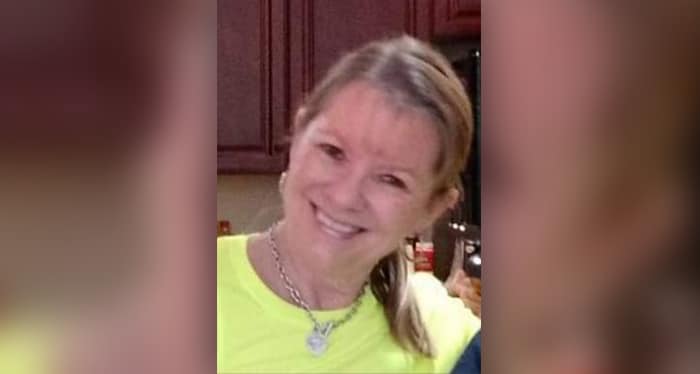Kim Farrington was born in Sioux City, Iowa, to Gordon and Cleo Farrington. Her father was a local television celebrity, working for NBC and appearing on children’s shows. Gordon was tall and slender, gentle and funny, and had many male friends. Cleo worked at a credit union and took care of Kim’s brother, who was very sick with Rheumatic fever. Cleo gave Farrington her “articulate thought.” Farrington’s grandparents, who lived in Elk Point, South Dakota, took Kim for several summers when she was young, allowing her parents to spend time with their sick son.
The summers and vacation time spent with her grandparents were wonderful memories for Farrington, as her “grandparents were angels.” Her grandmother was a wonderful seamstress and her grandfather was “very bright.” Road trips were taken to Rapid City and around South Dakota. Farrington recalls time spent with her grandparents as “very special and comforting.” Farrington remembers being on a tractor with her grandfather when she saw a plane fly over. She had never seen a plane before and asked her grandfather what it was, and he told her it was a grandfather flying his granddaughter to get an ice cream cone. Farrington wanted her grandfather to take a plane and get her an ice cream cone also. That was her first experience with a plane.
When Farrington was eleven years old, her parents moved from Sioux City to Miami, Florida. Farrington attended Cooper City High School. After graduation, she took courses in an accelerated nursing program. She then worked a series of jobs in physician offices, including orthopedic, pediatrician, and urologist offices.
In 1978 Farrington was hired as a Flight Attendant (FA) with Eastern Airlines in Miami, Florida. After a year and a half of flying, Farrington completed Senior FA Qualification Training and in 1980, was promoted to an Instructor FA position. Farrington was highly regarded by Eastern Airlines management and was selected to conduct special training that was required by the Federal Aviation Administration (FAA). After conducting the six-month FAA-mandated training, Farrington was promoted to a management position, Recurrent Instructor in the Training Department of Eastern Airline and in 1983, she was promoted again to Senior Instructor. In this role she took over the mentoring, training, and evaluation of ten FA Training Instructors, ensuring that they were compliant with all policies needed to train Flight Attendants in job duties and cabin safety requirements.
In 1997, Farrington began working for the FAA as an Aviation Safety Inspector. After three years, she was transferred to the FAA Flight Standards District Office, AirTran Airlines Oversight Unit in Orlando, Florida. At this point in her career, Farrington was a highly trained, motivated, energetic, and committed professional who was determined to do a great job wherever she placed. She received accolades from everyone who worked with her.
In 2000, shortly after arriving at the FAA’s Orlando office, Farrington discovered regulatory flaws and deficiencies within the FAA approved Pilot and Flight Attendant Training Programs. Specifically, with the Emergency Evacuation Procedures and Emergency Exit Operations. Farrington said that “not only were these flaws and deficiencies a severe safety risk to every passenger flying on AirTran, they were egregious violations of Federal Aviation Safety Regulations.”
Farrington reported the regulatory deficiencies to her supervisor and was advised: “she [Farrington] had no business commenting on, or documenting anything that occurred previous to her arrival in Orlando.” Office managers did not correct the regulatory deficiencies Farrington noted. They ignored her reports, detailing the “unqualified conditions of the Flight Attendant workforce” and allowed “the violations and inadequate training to continue for an additional three years.” During those three years, the AirTran workforce continued without adequate training, which presented a “severe safety risk to the flying public.”
In March 2003, AirTran had an emergency evacuation of passengers in LaGuardia, New York. This evacuation resulted in a National Transportation Safety Board (NTSB) accident investigation. Interviews with the passengers and Flight Attendants revealed that the crew had performed inadequately by not following the airline’s emergency procedures. They did not possess the knowledge and skill to properly open the emergency exit in the aft section of the plane. During the emergency evacuation, passengers in the aft section were concerned with the delay and inability to open the aft exit. They decided to walk into the cabin, and open the emergency window exits, and evacuate themselves. Later, Flight Attendants stated that the training they received at AirTran did not adequately prepare them to properly perform the emergency evacuation as they had never seen or been trained in the operation of the emergency exit in the plane’s aft section.
After the accident, Farrington was interviewed by the NTSB and provided them the history of blowing the whistle on regulatory violations and safety deficiencies at AirTran to upper management at FAA for over three years. Later, Farrington met with the FAA Southern Region Division Manager and disclosed that she had reported the regulatory violations and safety. She was ignored for three years, and corrective action was never taken. Near the end of the meeting, the FAA Southern Region Manager asked Farrington if she “was willing to fall on the sword” for everything she was reporting. Farrington answered, “yes.”
Retaliation came quickly after Farrington met with the FAA manager. Within a short time, she was called into an Employee Counseling meeting where she “was screamed and spit at and told not to speak to anyone else.” Farrington was threatened with termination several times at FAA after meeting with her manager. Working within a hostile environment and exposed to retaliatory behavior, Farrington’s physical and mental health began to suffer. Farrington sought out a specialist who prescribed her removal from the hostile work environment. Farrington was placed on work related medical absence and remained under this status until her termination in October 2004.
Losing her career, social network and medical insurance resulted in Farrington developing a hypothyroid disease, alone with “dental and orthopedic issues that have gone untreated.”
In 2008, Farrington filed a complaint with the Office of Special Counsel (OSC) and was surprised to have the head of OSC, Scott Bloch, “personally call multiple times to discuss my case.” Bloch was the subject of a federal criminal case that resulted in his termination on October 23, 2008.
In 2009 Farrington filed with the Merit System Protection Board (MSPB). In 2010 her case was dismissed by an Administrative Judge (AJ), but MSPB remanded her case for further adjudication in 2012. In 2013, another AJ was handed the case to determine remedies, but a decision was not reached. In 2016, the Government Accountability Project requested a decision from the MSPB, but the results were devastating. Farrington’s case was dismissed because the hearing transcript was missing. The court reporter had died before transcription. After securing the audiotapes, Farrington discovered that they “were poor quality and inaudible.”
The AJ also dismissed Farrington’s case due to missing witnesses, case delays, and insufficient evidence in proving retaliation. Farrington had to secure professionals to reconstruct the tapes and resubmitted her case to the MSPB. In the years since Farrington has been left twisting in the wind.
The MSPB consists of a three-member board. However, currently, all three positions are vacant. The MSPB has a more than 2900 backlog of cases awaiting a decision. Farrington’s is somewhere on that list. The medical issues stemming from her whistleblowing seriously impact her daily life. Farrington remains hopeful and tries to stay in good spirits.
Farrington remembers being fired in 2003 and a few months later finding out that the top echelon at FAA validated her safety and training concerns. Farrington was vindicated, and her whistleblowing undoubtedly saved lives, but the FAA did not offer her job back. Farrington has been waiting for justice ever since.
Visit Farrington’s GoFundMe page.
Disclaimer: Any links to a whistleblowers website or fundraising pages are done as a courtesy. WNN doesn’t control these fundraising pages and does not take a percentage of any of the funds raised.


